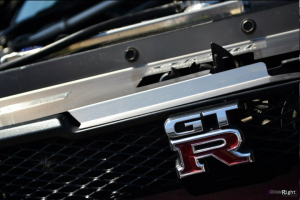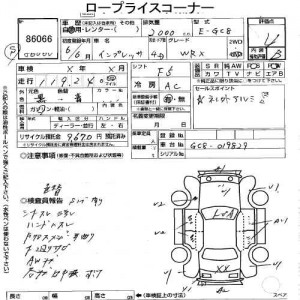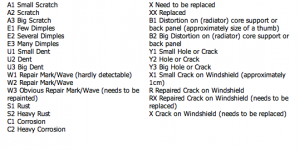Skymeet 2011 – a roaring success!
Last Saturday is a date Nissan Skyline owners and enthusiasts will remember. The largest gathering of Nissan Skylines (and GTRs) in Canadian history took place in Ontario at Right Drive. In total, the day saw a gathering of 64 cars, 55 of which were either a Nissan Skyline or a Nissan GTR.
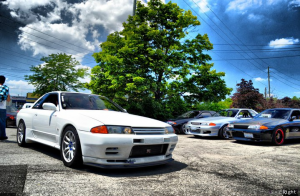 The Nissan Skyline is truly an exotic car, quite a sight for any car enthusiast. I'm sure all of us have dreamed of owning this iconic sports car at one point or another. To see 55 in one place, at one time, is another sight altogether. It is not often that such a gathering occurs. GTRCanada.com members came to Vaughan from as far away as Montreal, Ottawa and London to take part in a historic day.
The Nissan Skyline is truly an exotic car, quite a sight for any car enthusiast. I'm sure all of us have dreamed of owning this iconic sports car at one point or another. To see 55 in one place, at one time, is another sight altogether. It is not often that such a gathering occurs. GTRCanada.com members came to Vaughan from as far away as Montreal, Ottawa and London to take part in a historic day.
Skymeet is an annual event that is in in third year. Originally it was piggybacked on other events surrounding a race track, but this year it was a pure meet for the purpose of allowing devoted members and enthusiasts to get together and talk Skyline (and for an awesome spectacle for the rest of us!).
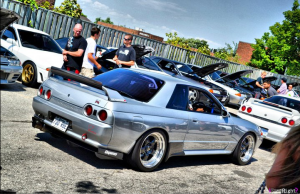 GTRCanada.com was founded by Dr. John Chu and is now run by Daryl Henwood, the parts manager at Right Drive Inc. Membership has grown by leaps and bounds since 2004, when the first Nissan Skylines reached Canadian shores (because of the 15 year rule). Even today though, catching a glimpse of these Japanese legends can be few and far between.
GTRCanada.com was founded by Dr. John Chu and is now run by Daryl Henwood, the parts manager at Right Drive Inc. Membership has grown by leaps and bounds since 2004, when the first Nissan Skylines reached Canadian shores (because of the 15 year rule). Even today though, catching a glimpse of these Japanese legends can be few and far between.
Thank you Right Drive for opening your all your hard work, and for hosting this event! We're really looking forward to next year! Also, thanks to IKnowRight Studios for the photos (all photos in this post are courtesy of Right Drive).
rob
Alert all Skyline owners: Meet this weekend in Vaughan ON!
The 3rd annual Skymeet is coming up fast! Basically, this is a meet for Skyline owners... and all skyline owners are welcome! Spectators are welcome too.
It sounds like it's going to be a good time. The meet is at Right Drive. 1970 Highway 7 West, Vaughan, Ontario.
There'll be photos here via RightDrive.ca, and I'm sure everywhere else too!
So, be there if you can be. Otherwise, live vicariously though this site, or Rightdrive.ca (I'll be doing this option, unfortunately).
rob
Learning how Auctions work
To bid on cars in Japan, you need an account with someone who has a bidding license. If you look back to the video walking through an auction house, you'll see that you need a special license to bid on the cars. There's a number of sites like this. Brave Auto international uses common software that's used to peruse the cars for sale, and J-Cars uses some other software.
On these site you'll see all the cars that are available to bid on. There are starting bids, and usually an average price shown to give you an idea what the car should go for. The average price is very misleading. The average price (depending on the site) is for cars of any grade that have approximately the same milage. Literally, that's cars that are new, to cars that have no front end. Ask your auction agent what the car you're looking for might usually go for. The datasheet shown is a WRX that's in great shape with 120000km, and the average price is says ~$400 which is totally off base.
What does it mean when a car doesn't sell? The starting bid has nothing in common with the seller's reserve price. Sometimes the reserve can be really high (higher than it should be?), but usually it's quite low.
All the cars in the auction are graded, but with varying degrees of negativity. The cars are graded out of 5, with 5 being the best. In general, you'll never see a 15 year old car with a grade greater than 4.
The exterior, and sometimes the interior, are then graded. The interior and exterior get a letter grade, from A to... D? I wouldn't go lower than a C, so I don't know.
The datasheet above is 4 B, which is a car in very good condition. The rest of the Datasheet changes from auction to auction. The 'car breakdown' is a very good way of discovering what kind of dings and dents the car has. The common markings can be seen in the picture to the left.
You'll need someone who speaks Japanese to translate the sheet for you. Some auction agents charge for this, some don't. If there's any uncommon markings on the sheet, the auction agent will (should) translate that for you too.
This is just an introduction... I'm sure there'll be more later! There's still shipping, which... well, is kind of a big deal when you buy a car on a different continent.
rob
